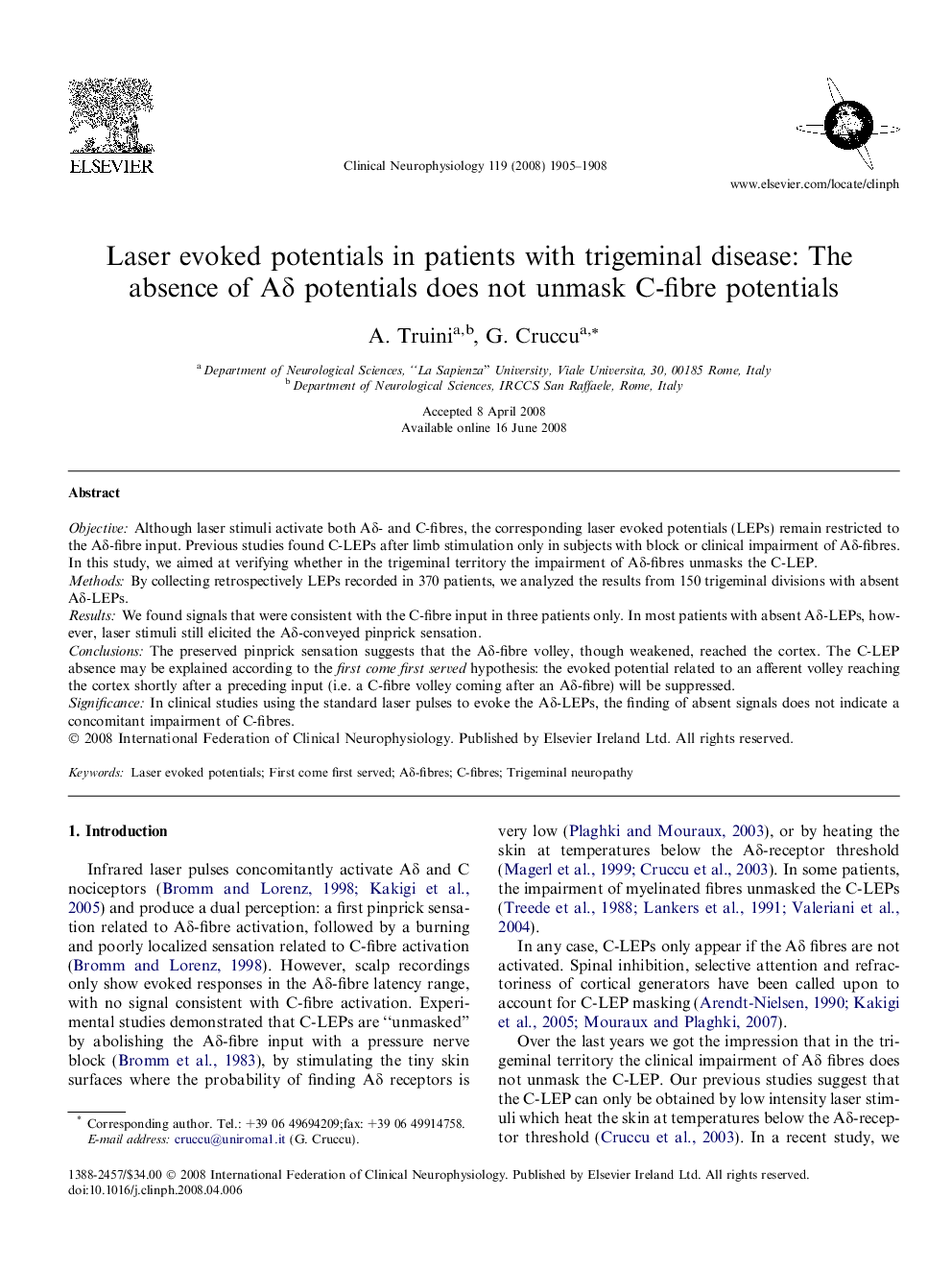| Article ID | Journal | Published Year | Pages | File Type |
|---|---|---|---|---|
| 3047760 | Clinical Neurophysiology | 2008 | 4 Pages |
ObjectiveAlthough laser stimuli activate both Aδ- and C-fibres, the corresponding laser evoked potentials (LEPs) remain restricted to the Aδ-fibre input. Previous studies found C-LEPs after limb stimulation only in subjects with block or clinical impairment of Aδ-fibres. In this study, we aimed at verifying whether in the trigeminal territory the impairment of Aδ-fibres unmasks the C-LEP.MethodsBy collecting retrospectively LEPs recorded in 370 patients, we analyzed the results from 150 trigeminal divisions with absent Aδ-LEPs.ResultsWe found signals that were consistent with the C-fibre input in three patients only. In most patients with absent Aδ-LEPs, however, laser stimuli still elicited the Aδ-conveyed pinprick sensation.ConclusionsThe preserved pinprick sensation suggests that the Aδ-fibre volley, though weakened, reached the cortex. The C-LEP absence may be explained according to the first come first served hypothesis: the evoked potential related to an afferent volley reaching the cortex shortly after a preceding input (i.e. a C-fibre volley coming after an Aδ-fibre) will be suppressed.SignificanceIn clinical studies using the standard laser pulses to evoke the Aδ-LEPs, the finding of absent signals does not indicate a concomitant impairment of C-fibres.
